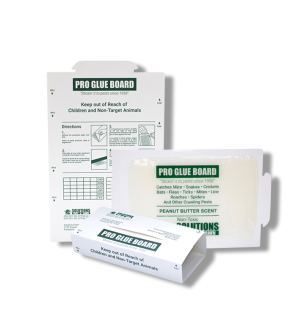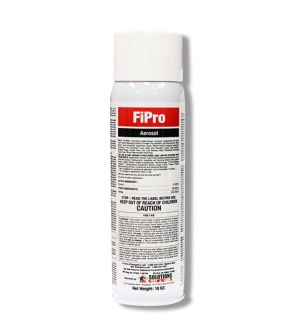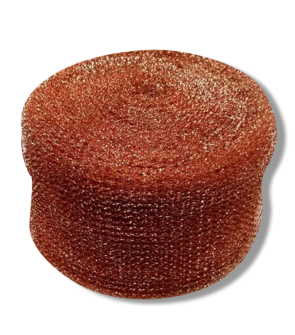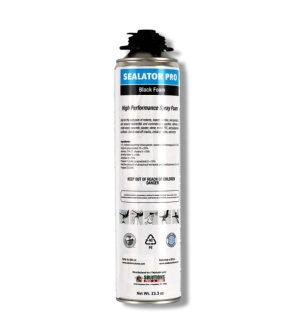Where Do Pests Go During the Winter?
Most Effective Products
Where Do Pests Go During the Winter?
This page is a general guide that explains the winter activities of various insect pests as well as where they go during the winter season. Using the products and methods suggested, you can completely control insect activity during the winter season and prevent high infestations during the winter.
When winter season arrives, homeowners are often preparing for holiday celebrations and enjoying the company of friends or families. Some homeowners often wonder where insects or pests like termites, cockroaches, mosquitoes, or ants go to during the winter season.
Many homeowners often assume that pests perish during the cooler months of winter. In reality, these pests have developed internal mechanisms or behavior patterns to help them survive the weather patterns of winter. Crawling pests like stink bugs or other pests that do not hibernate in the winter make their way into homes to escape the freezing conditions.
There are a number of pests that can invade the interior of homes during winter and emerge in mass numbers during the spring season. For this reason, learning the behavior patterns and skills that make various pests survive the winter will help to lessen the amount of pesticide applications in the spring.
How Seasonal Changes Affect Pests
Seasonal changes throughout the year influence pest behavior, activity level, and survival strategies.
As temperatures drop, many insects struggle to maintain activity. Arthropods don’t generate their own body heat, relying on warmer weather to keep their bodies in motion. Without heat, many insects become lethargic, slowing down their bodily functions.
Winter also brings food shortages for pests. Plants stop growing actively, pushing insects to adapt or seek other food sources.
How Pests Survive Winter
As winter approaches, different pests will employ many survival strategies to endure the cold. Collectively, these strategies are known as ‘overwintering,’ and help pests to find shelter and conserve energy.
When it gets cold, many insects enter a state of hibernation known as diapause. During diapause, these insects slow down their metabolism, putting a stop to their development until the weather warms back up.
Pests that undergo diapause tend to seek shelter in hard-to-reach places closer to heat sources, such as around plumbing or water heaters. For example, termites and ants may burrow deeper into the ground to escape the winter chill. Other insects will lay eggs in well-hidden locations knowing they won’t develop until the weather warms.
Stink bugs and Asian lady beetles are known to overwinter within human homes. They can penetrate buildings through weep holes and other openings to protect themselves from the cold. Once temperatures warm up, they emerge indoors in large numbers, making their infestation seem sudden when they’ve been inside all season.
In addition to diapause as a way of surviving winter, some insects will instead migrate to warmer climates. Similar to birds, many insects like beetles, moths, and leafhoppers will travel long distances southward to escape winter temperatures.
Preventing Overwintering Pests
To prevent spring infestations in your home, take action before winter arrives. Proper pest prevention will save you time and money from dealing with unexpected pest problems.
First, start with a thorough inspection of your home for potential entry points and food sources. Clean up any food residue, crumbs, and food storage areas, especially the kitchen. Address water leaks and other moisture issues to eliminate water sources. Finally, declutter and organize storage areas as you note potential pest entry points.
Next, we recommend you apply insecticides to treat active infestations and stop future ones.
To treat cracks, crevices, and wall voids, FiPro Foaming Aerosol is ideal for controlling ants, termites, stink bugs, Asian lady beetles, and other wall-infesting insects. This product contains Fipronil, which is undetectable by labeled insect pests.
Spray along the lengths of cracks and crevices and into wall voids and allow the foam to expand. After application, hold the can in place for about 8 seconds to allow the product in the straw to dispense into the treatment area.
When applied properly, insects will unknowingly make contact with the product and spread it throughout the population, resulting in a systemic elimination. FiPro has a long-lasting residual and will protect treated areas from overwintering pests, but we recommend you make follow-up applications every 30 days for total protection.
To create barriers outdoors and stop pests from entering in the first place, apply a product like Supreme I/T as a perimeter application. Supreme I/T is a bifenthrin-based insecticide with repelling properties.
As a barrier spray, mix 1 fluid ounce of product into 1 gallon of solution to treat up to 1,000 square feet. Spray around entry points like doors and windows, the garage door, voids in the wall, utility penetrations, and other cracks and crevices overwintering insects can use. Then, spray around the perimeter of your home by spraying 3 feet up the structure and 3 feet out.
When applied properly, Supreme I/T will control treated areas for up to 90 days. Insects that make contact with the spray or its residual will have their nervous systems impacted and will die shortly. Make reapplications every 3 months for continued control.
In addition to insecticides, set traps and apply physical exclusion to create additional barriers to entry. Tight cracks and crevices pests often use can be sealed with an expanding foam like Sealator Pro Black Foam. Larger openings may be stuffed with Stuf-Fit Copper Mesh. Glue traps like Solutions Pro Glue Boards can be placed to monitor for activity, stop pests, and prevent deeper infestations.
We recommend you follow these steps and strategies during fall before the weather cools for winter. Once pests decide to go into diapause or hibernate, they won’t be able to invade your home to survive the cold temperatures.
Insects that Migrate During Winter

Insects that cannot survive the cold simply fly away from the location and travel far enough to not encounter the winter season. Like birds, most insect species travel to the south since the winter is less freezing than that of the north. Species of pests such as beetles, moths, leafhoppers, and many other type of flying pest are all examples of pests that migrate during the winter season.
Insects Lay Eggs

One of the most common ways that insects increase their populations during the winter is to lay eggs. Even though this means that the adulticide insect has little chances of survival it can continue to increase their populations due to its internal instinct.
Pests will often lay their eggs on the and bottom of foliage leaves, bark, beneath the soil, within cracks and crevices, corners of rooms and soffits, around water heaters, pipes, and plumbing, carpets, fabric of furniture, basements, attics, and underneath kitchen appliances that creates enough heat and moisture for the egg to develop.
Key Takeaways
How to Prevent Pest Infestations During the Winter?
- Perform perimeter checks along the outside and inside foundation of homes for cracks, crevices, and past insect activity such as chewed on leaves or shed body parts. Apply a long-lasting residual herbicide such as Supreme IT which can treat mosquitoes, cockroaches, ants, moths, leafhoppers, termites, beetles, stinks bugs and up to 70 other types of insects. Other areas that cannot easily be reached may be treated with a glue trap like Solutions Pro Glue Board.
What is Diapause?
- Diapause is a trait in most insect species that help them to survive cooler weather conditions such as snow or consistent shade. During this process the insect will not be able to move or grow until the weather becomes warmer.
Do Insects Die During the Winter?
- Depending on the insect they do perish during cooler weather conditions, but other pests have developed other forms of survival. This can be seen with pests ability to freeze, burrow into the soil, lay eggs, and migrate to other warmer regions.















































































































































































































































































































































































































































































































































